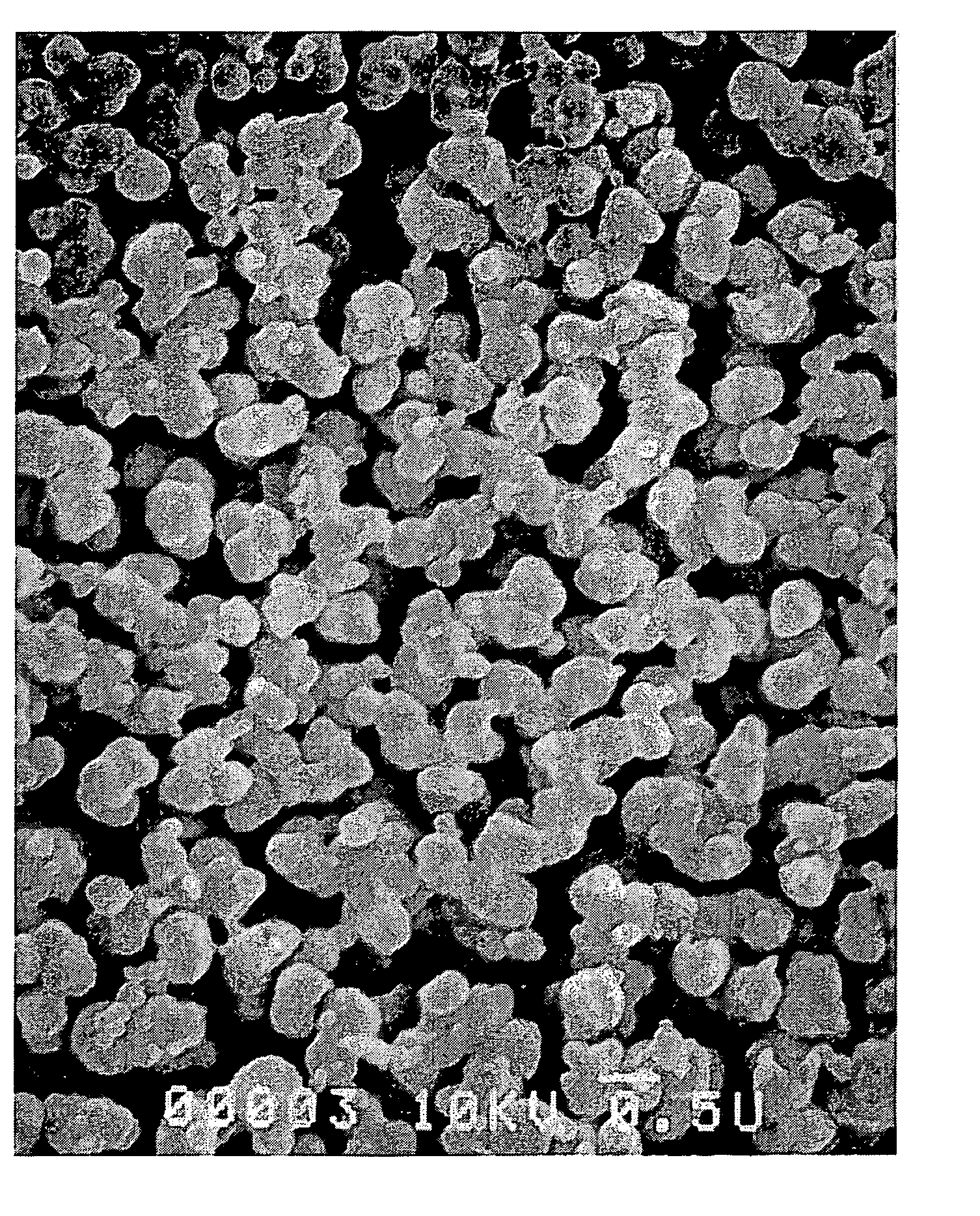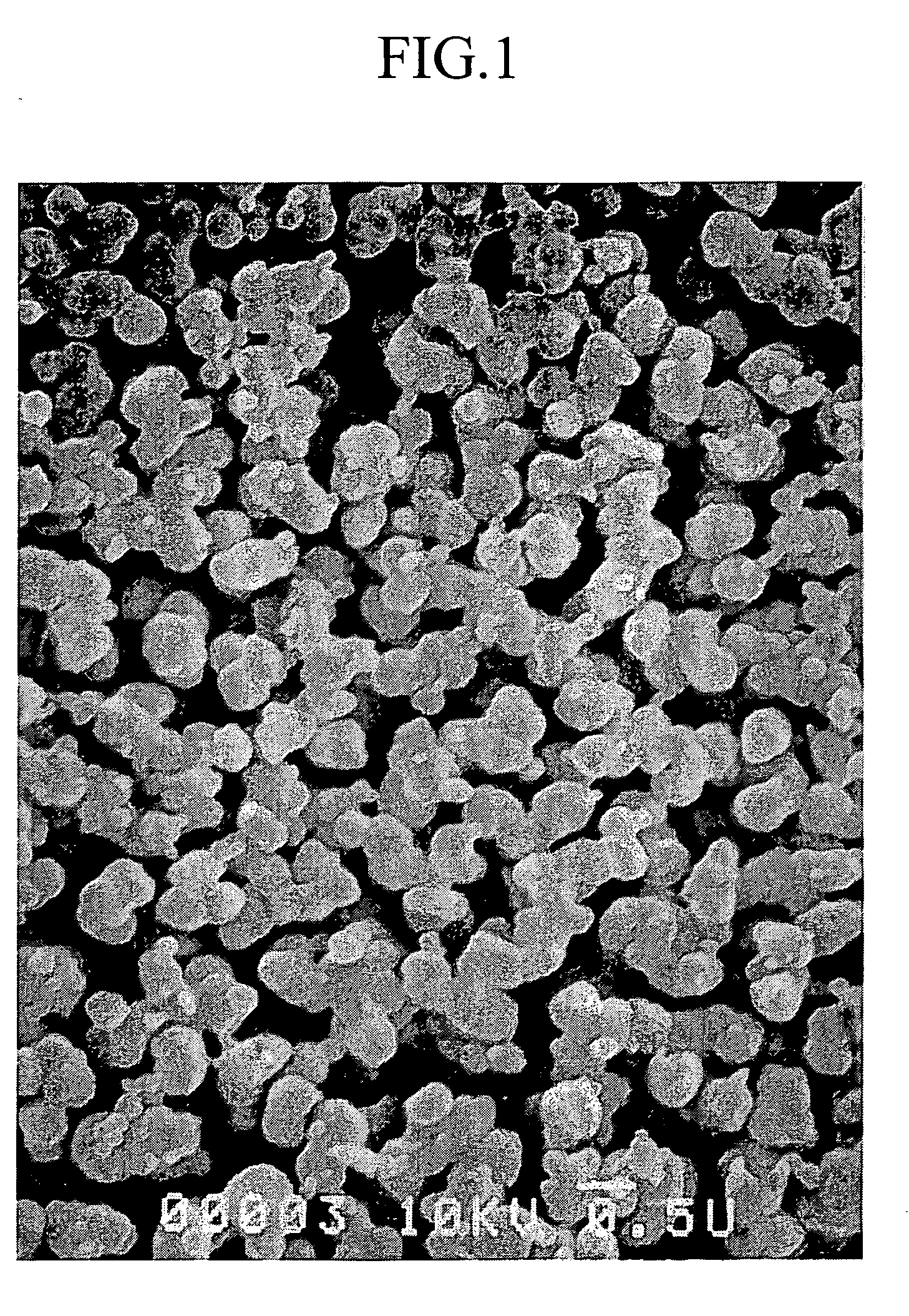Micro fluid device and process for producing the same
- Summary
- Abstract
- Description
- Claims
- Application Information
AI Technical Summary
Benefits of technology
Problems solved by technology
Method used
Image
Examples
example 1
[0138] The present example 1 is an example of producing a porous resin layer having a three-dimensional mesh structure according to the “reaction induction-type phase separation method”.
[0139] [Preparation of Membrane Deposition Liquid (J)]
[0140] 72 parts of a trifunctional urethane acrylate oligomer (Unidic V-4263, Dainippon Ink and Chemicals) having an average molecular weight of 2000, 18 parts of dicyclopentanyl diacrylate (R-684, Nippon Kayaku), 10 parts of glycidyl methacrylate (Wako Pure Chemical Industries), 150 parts of methyl decanoate (Wako Pure Chemical Industries), 10 parts of a volatile good solvent in the form of acetone, and 3 parts of an ultraviolet polymerization initiator in the form of 1-hydroxycyclohexyl phenyl ketone (Irgacure 184, Ciba-Geigy) were uniformly mixed to prepare membrane deposition liquid (J1).
[0141] [Preparation of Composition (X)]
[0142] 50 parts of a trifunctional urethane acrylate oligomer (Unidic V-4263, Dainippon Ink and Chemicals) having an ...
example 2
[0162] The present Example 2 is an example of producing a porous resin layer having a three-dimensional mesh structure according to the “surface swelling method”.
[0163] [Preparation of Composition (X)]
[0164] A composition (X2) was prepared in the same manner as the preparation of composition (X1) in Example 1 with the exception of mixing 40 parts of 1,6-hexanediol ethoxylate diacrylate (Photomer 4361, Cognis Japan) instead of 40 parts of hexanediol diacrylate (New Frontier HDDA, Daiichi Pharmaceutical), and mixing 10 parts of nonylphenoxy polyethylene glycol (n=17) acrylate (N-177E, Daiichi Pharmaceutical) instead of 10 parts of glycidyl methacrylate (Wako Pure Chemical Industries). The viscosity of this composition was 220 mPa·s.
[0165] [Step 1: Formation of Porous Resin Layer Having a Three-Dimensional Mesh Structure]
[0166] (Formation of Three-Dimensional Mesh Structure)
[0167] After immersing a polystyrene sheet (Dainippon Ink and Chemicals) having a thickness of 150 μm used as ...
example 3
[0182] The present example 3 is an example of producing a porous resin layer having a three-dimensional mesh structure according to the “wet method”.
[0183] [Preparation of Membrane Deposition Liquid (K)]
[0184] 5 parts of a linear polymer in the form of an aromatic polyamide (Conex, Teijin), 90 parts of a solvent (U) in the form of N,N-dimethylacetoamide (Wako Pure Chemical Industries), and 5 parts of an additive in the form of ethylene glycol were uniformly mixed to obtain membrane deposition liquid (K).
[0185] [Preparation of Composition (X)]
[0186] 50 parts of tritetraethylene glycol bis-maleimide (Lumicure MIA200, Dainippon Ink and Chemicals), 40 parts of 1,6-hexanediol ethoxylate diacrylate (Photomer 4361, Cognis Japan), 10 parts of N,N-dimethylacrylamide (DMAA, Kohjin), and 0.5 parts of polymerization retardant in the form of 2,4-diphenyl-4-methyl-1-pentene (Kanto Chemical) were mixed to prepare composition (X3). The viscosity of said composition (X3) was 100 mPa·s.
[0187] [Ste...
PUM
 Login to View More
Login to View More Abstract
Description
Claims
Application Information
 Login to View More
Login to View More - Generate Ideas
- Intellectual Property
- Life Sciences
- Materials
- Tech Scout
- Unparalleled Data Quality
- Higher Quality Content
- 60% Fewer Hallucinations
Browse by: Latest US Patents, China's latest patents, Technical Efficacy Thesaurus, Application Domain, Technology Topic, Popular Technical Reports.
© 2025 PatSnap. All rights reserved.Legal|Privacy policy|Modern Slavery Act Transparency Statement|Sitemap|About US| Contact US: help@patsnap.com


